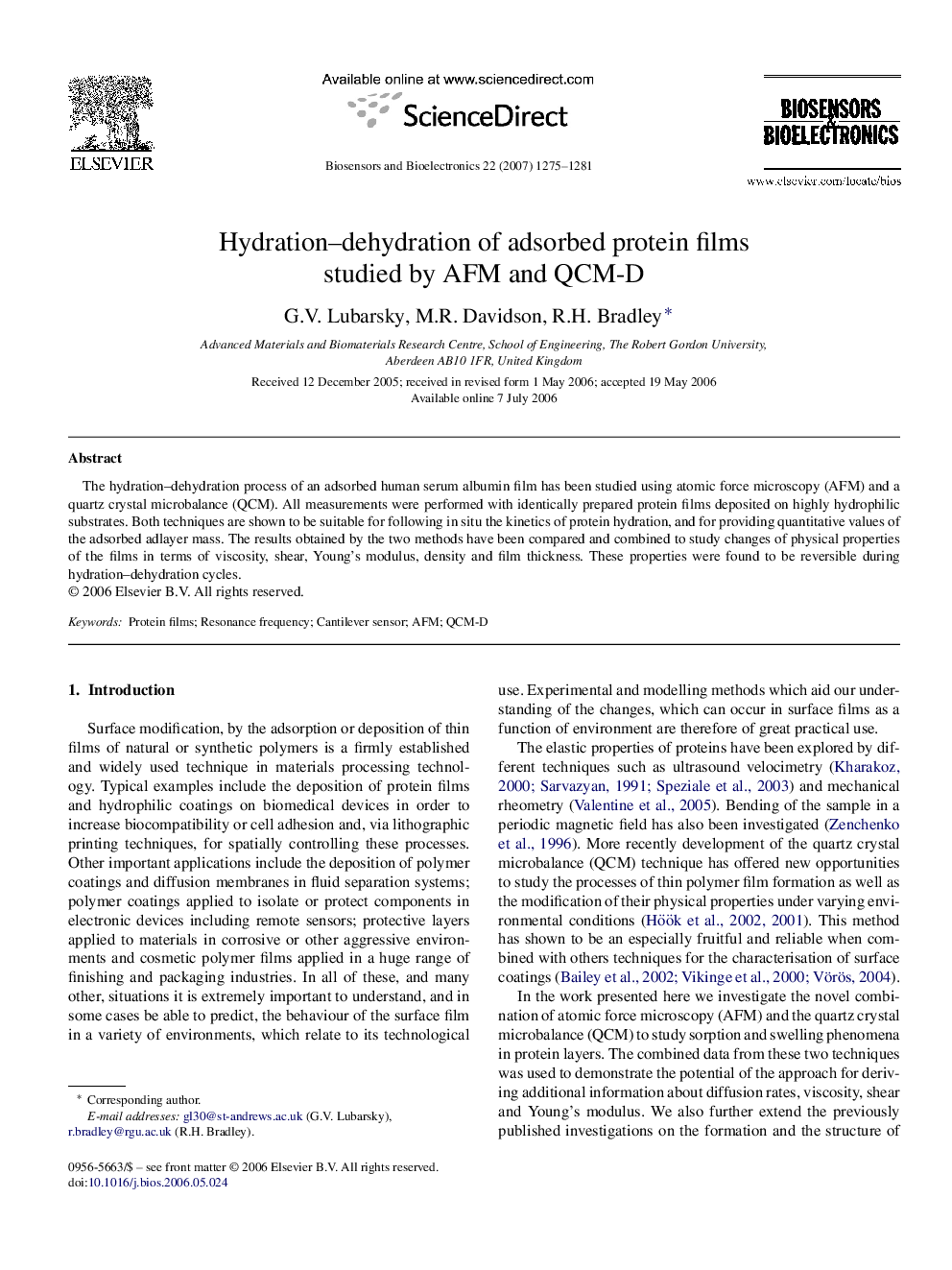| Article ID | Journal | Published Year | Pages | File Type |
|---|---|---|---|---|
| 870199 | Biosensors and Bioelectronics | 2007 | 7 Pages |
Abstract
The hydration–dehydration process of an adsorbed human serum albumin film has been studied using atomic force microscopy (AFM) and a quartz crystal microbalance (QCM). All measurements were performed with identically prepared protein films deposited on highly hydrophilic substrates. Both techniques are shown to be suitable for following in situ the kinetics of protein hydration, and for providing quantitative values of the adsorbed adlayer mass. The results obtained by the two methods have been compared and combined to study changes of physical properties of the films in terms of viscosity, shear, Young's modulus, density and film thickness. These properties were found to be reversible during hydration–dehydration cycles.
Related Topics
Physical Sciences and Engineering
Chemistry
Analytical Chemistry
Authors
G.V. Lubarsky, M.R. Davidson, R.H. Bradley,
